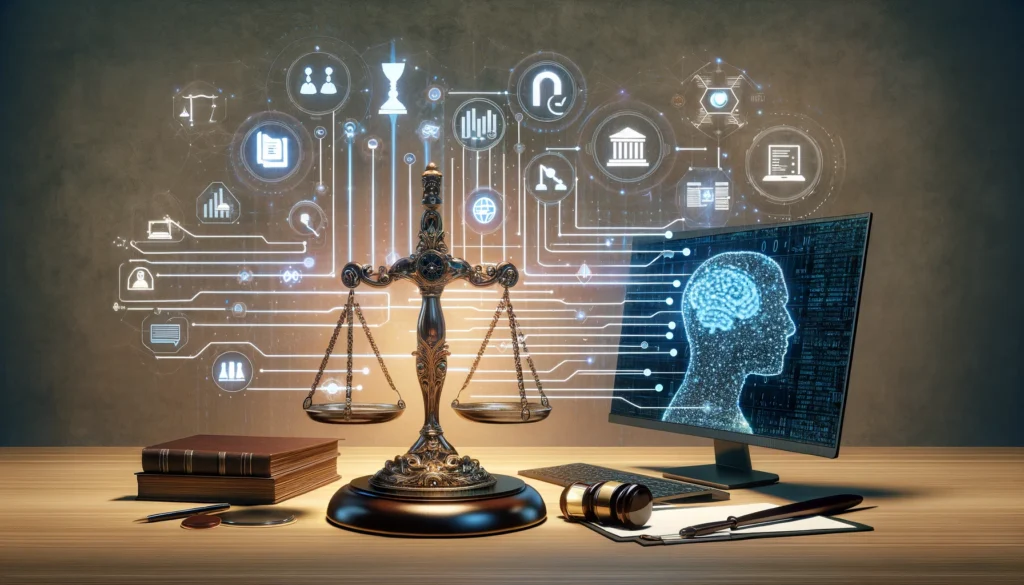
The Modern Paralegal’s Quandary
Corporate proxy statements, dense and detailed, are a formidable task for paralegals across the legal landscape. These documents require precision and deep understanding of both corporate governance and investor relations.
But why do traditional methods fall short? Often it’s a matter of time and resources. Manual processes, prone to human error, turn the preparation of proxy statements into a time-consuming endeavor, leaving little room for strategic thinking.
To tackle these challenges effectively, modern paralegals seek innovative solutions that streamline workflows without compromising accuracy or compliance. This is where emerging technologies like ChatGPT come into play.
Enter ChatGPT: A New Era of Legal Assistance
Large Language Models (LLMs) such as ChatGPT represent a game-changer for legal professionals. These sophisticated AI systems can understand and generate human-like text based on the input they receive.
For paralegals, the benefits are manifold. ChatGPT can rapidly generate proxy statement sections, provide clarifications on complex terms, and even suggest best practices, thus freeing up time for more strategic activities. Additionally, it offers a level of consistency that is hard to achieve manually.
With the advantages clear, the next step is understanding how to effectively configure and utilize ChatGPT for this purpose.
Setting Up for Success: Preparing ChatGPT
Customization is crucial when configuring ChatGPT for legal tasks.
- Initial Configuration: Start with the default settings and fine-tune them based on specific legal needs. Customize the model by feeding it texts from past proxy statements and relevant legal documents to help it understand the context and specific terminology.
- Prompt Customization: Tailor prompts to maximize relevance and accuracy. For instance, instead of a general prompt, use: “Draft the section on executive compensation for a mid-sized corporation’s proxy statement, focusing on base salary, bonus structure, and stock options.”
By setting the stage correctly, ChatGPT can become an indispensable tool in the preparation of proxy statements.
Crafting Precision: Nuanced Prompts That Matter
Effective use of ChatGPT hinges on the quality of the prompts given to it. Here are techniques to refine this process:
- Be Specific: Include details in the prompt, such as the type of corporation, specific sections, and the kind of tone required. For example, “Create a summary of shareholder rights for a Fortune 500 company’s proxy statement, maintaining a formal and instructive tone.”
- Context-Awareness: Provide background information where necessary. For a section on board of directors’ composition, a good prompt would be: “Outline the requirements for board composition in line with NYSE regulations, including independence and diversity criteria.”
Detailed prompts lead to more accurate and relevant outputs, making the task of reviewing and editing significantly easier.
Quality Control: Ensuring Accuracy and Consistency
Even with sophisticated AI, due diligence remains paramount. Quality assurance is twofold:
- Double-Check Content: Always review the generated sections for accuracy and completeness. Cross-reference with existing guidelines and prior examples to ensure consistency.
- Integration of Review Tools: Use both human insights and automated tools. Grammarly, legal-specific software like Westlaw’s Drafting Assistant, and internal review checklists can ensure the content meets the highest standards.
Such rigorous review mechanisms ensure that ChatGPT’s outputs maintain the high standards required in legal documentation.
Advanced Techniques: Going Beyond the Basics
Once you’re comfortable with basic tasks, leverage ChatGPT for more complex needs:
- FAQs and Supplementary Info: Use ChatGPT to generate responses for common shareholder questions or supplementary sections such as environmental, social, and governance (ESG) reports.
- Style and Tone Adaptation: Train ChatGPT to match your firm’s unique style and tone. Provide samples of previous proxy statements or specific sections so the AI can emulate the desired voice.
Such advanced techniques can significantly enhance the efficiency and consistency of proxy statements, while also freeing up valuable time.
Time-Saving Integrations: Streamlining Workflows
Integration is key to maximizing ChatGPT’s efficiency. Consider the following:
- Document Management Systems: Embed ChatGPT into your existing document management framework. Tools like DocuSign, NetDocuments, or iManage can interface with ChatGPT to streamline document generation processes.
- Handle Revisions: Use ChatGPT to swiftly address feedback and updates by feeding it specific revision needs, such as: “Revise the conflict of interest section to include newly updated SEC guidelines.”
Such seamless integration significantly reduces administrative bottlenecks, ensuring a smoother workflow.
Future-Proofing Your Practice: Staying Ahead of the Curve
With AI technology evolving rapidly, maintaining foresight becomes essential. Engagement in continuous learning and adaptation strategies, like attending webinars or subscribing to AI legal tech journals, is paramount.
Continuous innovation within this space ensures practices stay ahead, making long-term success more attainable.
Conclusion: A Paradigm Shift in Legal Practices
In summary, integrating ChatGPT into the preparation of corporate proxy statements can unlock unprecedented efficiency. The tailored prompts, detailed reviews, and seamless integrations provide a significant edge over traditional methods.
The forward-thinking legal professional who embraces these technologies will not only streamline their workflow but also elevate the quality and consistency of their outputs. Early adoption and ongoing experimentation are the keys to standing out in this technologically advancing field.


